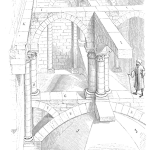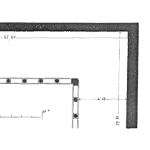
Hot on the heels of my two articles (part 1 and part 2) about Data being unfit for purpose is another article by my colleague, Paul Daoust, just published in Canadian Business Quarterly.
[Read more…]Your Reliability Engineering Professional Development Site
Author of Conscious Asset articles and multiple books.
This author's archive lists contributions of articles and episodes.
by James Reyes-Picknell Leave a Comment

Hot on the heels of my two articles (part 1 and part 2) about Data being unfit for purpose is another article by my colleague, Paul Daoust, just published in Canadian Business Quarterly.
[Read more…]by James Reyes-Picknell Leave a Comment

Can’t you make better decisions informed by good evidence? If not, it may be that your data isn’t fit for its intended purpose.
In the first part of this blog mini-series, I point out that the data in Maintenance Management Systems are very often “unfit for purpose” and I list several reasons for “why”.
[Read more…]by James Reyes-Picknell Leave a Comment

The data in Maintenance Management Systems are very often “unfit for purpose”. When asked about why there is an Enterprise Asset Management or Computerized Maintenance Management system, the answer varies. Here are some reasons we’ve heard:
by James Reyes-Picknell 1 Comment

Resilience has been lost – and it’s our fault. We need to get it back.
As the Covid pandemic transitions to endemic (I am optimistic) we will get back to a “new normal”. No one really knows what the “new normal” will be like (yet), but it’s safe to say that it won’t be the same as the “old normal”.
[Read more…]by James Reyes-Picknell Leave a Comment

As noted in other articles, performance measures are used to drive behaviors to make positive organizational changes in support of the organizational strategy and goals. However how well the performance measures may be developed and defined, if they are not effectively communicated to those individuals whose behavior is important to achieve the strategy and goals, then the performance measures have little value.
[Read more…]by James Reyes-Picknell Leave a Comment

Another conspiracy theory debunked. Your business has various insurance coverages including business continuity. You pay quite a hefty premium for that coverage so you believe you are covered. But are you really?
[Read more…]by James Reyes-Picknell Leave a Comment

Like Surfside, are you “inspecting to failure”?
In June 2021, we learned about the partial collapse of a condominium in Surfside Florida, with devastating results – only a few survivors, and many fatalities. The building had actually been inspected in 2018 by a qualified engineer, and parts of it were deemed to be “structurally unsound”. In plain English, that means the building’s structure was no longer in good condition and possibly dangerous. It was unsafe to use. The report was submitted to a local authority who raised no red flags, and the building owners chose to do nothing about it. Roughly 3 years later – disaster. It’s a sad example of “inspecting to failure”.
[Read more…]by James Reyes-Picknell Leave a Comment

If you believe that reliable operations will result if you just follow your maintenance program, then you might also believe a few falsehoods about reliability and maintenance. First is the falsehood that maintenance is all you need to achieve reliability. Maintenance is about sustaining the asset’s operating conditions, not just fixing it when it breaks. Indeed, you do need to follow your maintenance program but it is not all there is to do, and it had better be the right program.
[Read more…]by James Reyes-Picknell Leave a Comment

A well-designed maintenance program should eliminate the need to do condition assessments. These assessments are a form of condition monitoring, so why not include them in your proactive maintenance (PM) program? They are carried out to determine the current condition of an asset, determine if any remedial work is required, make an estimate of how long it will last, and forecast timing for eventually replacing the asset. In civil structures like buildings and bridges, these assessments are often called, “inspections”. When timed regularly they are no different from a condition monitoring task in any PM (proactive maintenance) program. Yet, they will be managed differently. Why that is so, doesn’t really matter, but arguably it just adds another program that must be managed in parallel with your maintenance program.
[Read more…]by James Reyes-Picknell 1 Comment

Do you have a reliability department, a maintenance department, or a repair department?
Do you avoid failures? Do you avoid or mitigate their consequences?
Or do you wait for things to go wrong, then fix them?
Repairs are all about fixing what has broken. When something breaks you lose whatever functionality it had. It more than likely broke when you were using it too. So you also lost the benefit of that functionality – often production or service delivery capability. The costs include repair, whatever secondary physical damage occurred, the loss of revenues and profits, plus safety and environmental consequences that arise. When something breaks its “useful life” is reduced – deterioration was allowed to accelerate, so even once repaired, the asset has lost some future useful life. The fix for that longer-term deterioration impact is a capital replacement – earlier than need be. If the breakdown was really bad, then it might be much sooner.
[Read more…]by James Reyes-Picknell Leave a Comment

Covid put many of our companies into a paralysis-like state. We’ve survived thanks to austerity measures, but we all know that we can’t cut our way to prosperity. As the recovery looms, we can act now to ensure sustained operational efficiency and organic growth post-pandemic.
Improving your maintenance program, as mundane as it may sound, can produce very high returns for very little investment. The first step – stop viewing maintenance as a cost to be minimized. Rather, view it as an ongoing investment in productive capacity.
[Read more…]by James Reyes-Picknell Leave a Comment

Are you ready to ramp back up?
Slowing down reduced supply and raised prices. Survival cost-cutting also put our companies into a state of Covid-induced paralysis. Like a person who is paralyzed – vital systems keep working so we survive, but growth, movement, and improvement all stop. I recall a soccer accident where my knee was damaged. I wasn’t paralyzed but that one leg was immobilized. It took me months to recover after the surgery was completed. The muscles in my leg had shrunk and strength needed to be rebuilt. In normal times, I’d have kept using the muscles and they would have strengthened, not shrunk.
by James Reyes-Picknell Leave a Comment

Covid scared us all! Here you can see two Red Pandas with their version of a threatening response. When threatened, we will have one of three reactions – fight, flight, or freeze.
Our businesses also have similar responses. A few have fought – and they “pivoted.” Some fled – they folded up and went away. Many simply froze – they halted just about everything. If your business froze, then this article is for you.
[Read more…]by James Reyes-Picknell 1 Comment

Get it right on paper before attempting to computerize and automate.
The Work Management Process. One of the biggest uses of IIoT, ML, and AI in the industry (so far) is in the field of condition monitoring and forecasting times to failure. IIoT devices deployed on your equipment and systems, send exception signals (they use edge computing to filter out the vast majority of the data that merely tells you “all is well”) over some sort of network (usually wireless), then some sort of software interface produces a message for you to read (maybe triggers and work request, or sounds an alarm) and then act on.
[Read more…]by James Reyes-Picknell Leave a Comment

Tech is needed, but do not focus only on the tool – implementation is key. For my musical aspirations that means the acquisition of a tool (the instrument), making sure it is set up correctly (tuning and positioning), investment in lessons and practice, using it regularly, and eventually, someone will tell me it sounds good. That’s my goal, and incidentally, I’m not there yet.
[Read more…]